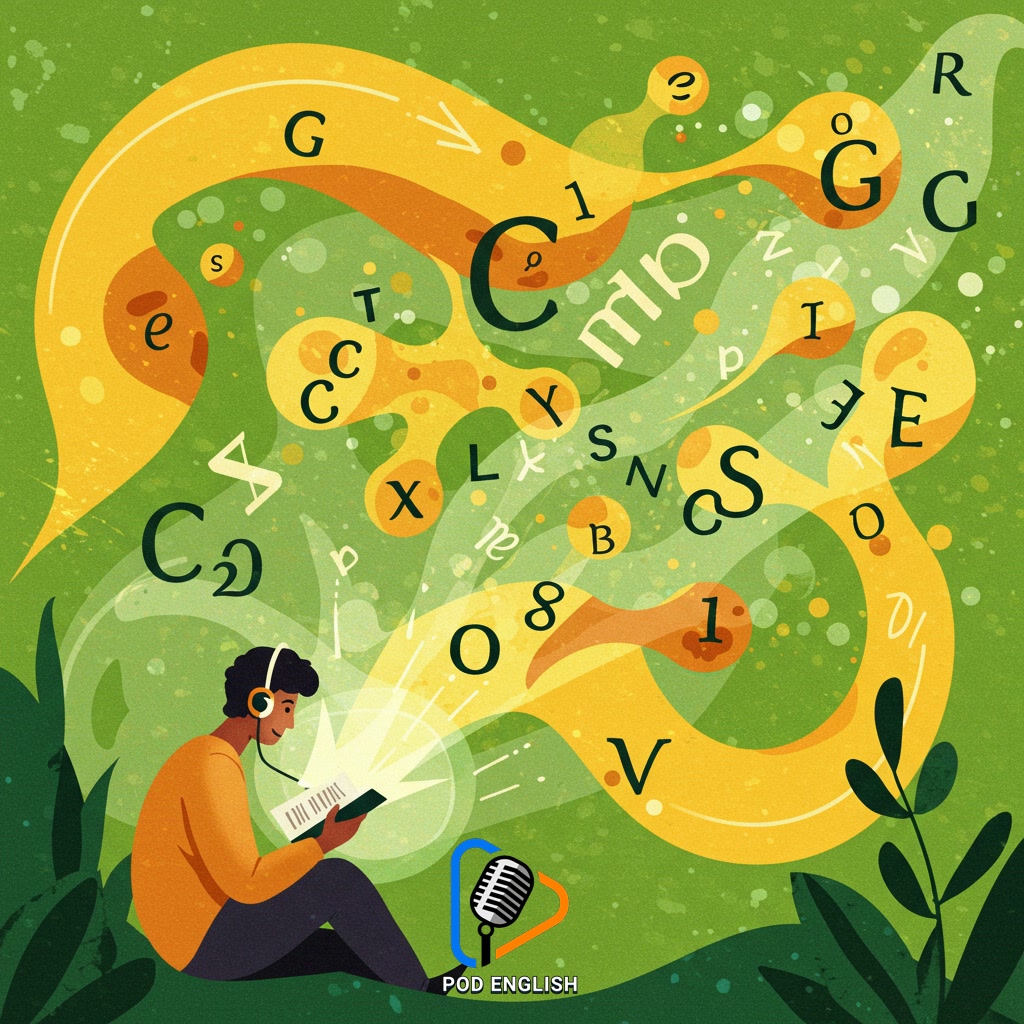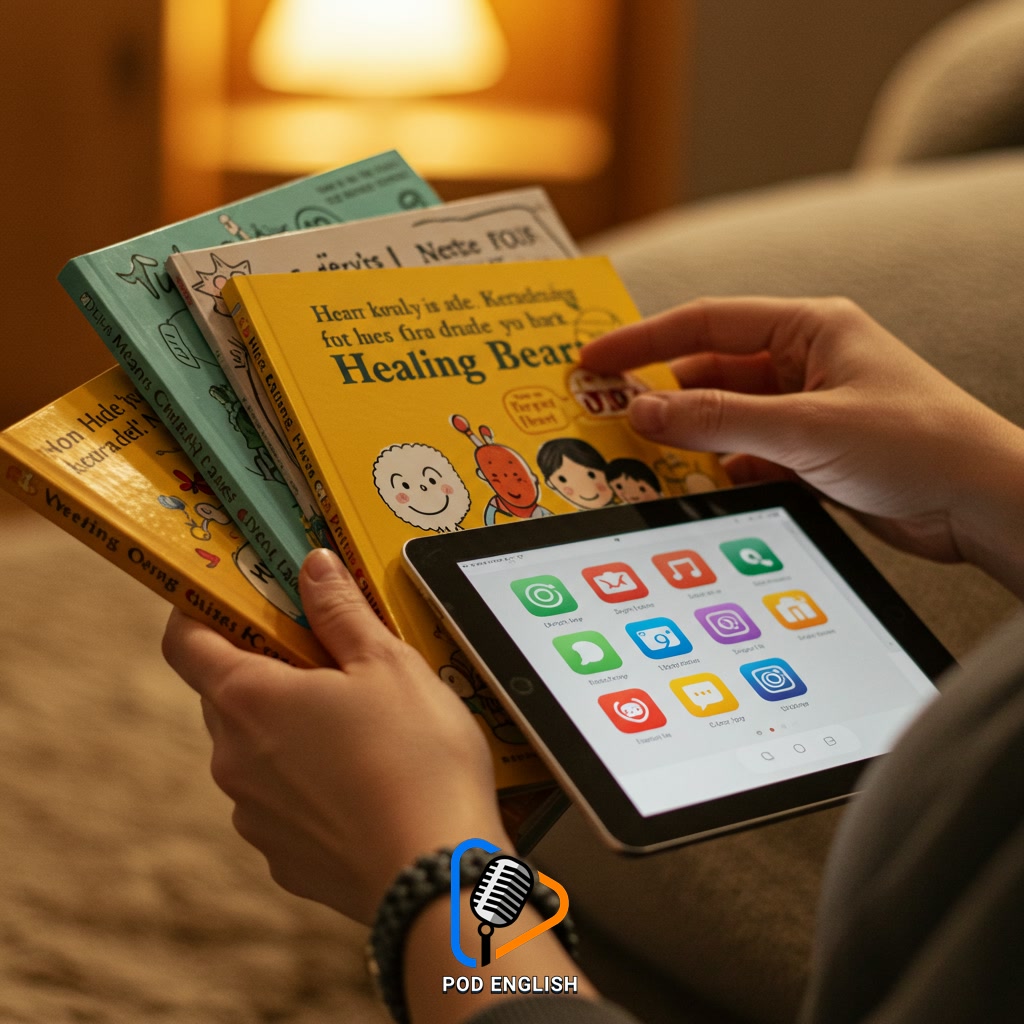Learn English
Unlock English Fluency: Discover the Power and Effectiveness of Learning Through Stories

This content explores a powerful and effective method to learn English and achieve fluency. It highlights the significant benefits of using stories as a tool for language acquisition. Discover how engaging with narratives can accelerate your English learning journey and enhance your communication skills. The material reveals the effectiveness of immersing yourself in stories to unlock your potential for fluent English expression.
Table of Contents
- Section 1: The Fluency Challenge: Why Traditional Methods Aren’t Always Enough
- Section 2: Discovering Story-Based Learning: An Intuitive Approach
- Section 3: The Power of Narrative: How Stories Enhance Language Acquisition
- Section 4: Key Benefits: Boosting Vocabulary, Grammar, and Comprehension Naturally
- Section 5: Putting it into Practice: Effective Strategies for Learning with Stories
- Section 6: Choosing the Right Stories and Resources for Your Level
- Section 7: Unlock Your Potential: Start Your Story-Powered Fluency Journey
Section 1: The Fluency Challenge: Why Traditional Methods Aren’t Always Enough
Traditional English learning often emphasizes mastering grammar rules, memorizing extensive vocabulary lists, and completing structured exercises. While these components build a necessary foundation, they frequently prove insufficient for achieving genuine fluency. Learners may possess strong theoretical knowledge and a large vocabulary but find themselves hesitant or unable to apply this knowledge spontaneously and naturally in real-time conversations. The difficulty lies in bridging the gap between understanding language mechanics and utilizing them effortlessly for practical communication. Conventional approaches can sometimes create a disconnect from authentic language use, preparing individuals for tests but not necessarily for the dynamic, unpredictable nature of real-world interactions, leaving many feeling stuck on the path to confident, fluid expression.

The Fluency Challenge: Why Traditional Methods Aren’t Always Enough
Section 2: Discovering Story-Based Learning: An Intuitive Approach
Building upon the foundation of traditional methods, story-based learning offers a fundamentally different, often more intuitive pathway to English fluency. Instead of solely focusing on isolated rules and words, this approach leverages the natural human inclination towards narratives. Stories provide context, emotion, and a logical flow that makes language acquisition feel less like studying and more like engaging with the world. By immersing yourself in compelling tales, you encounter grammar and vocabulary organically, seeing how they are used in real situations. This intuitive process mirrors how we learn our first language, making English feel more accessible and less intimidating, fostering a deeper connection with the language itself.

Discovering Story-Based Learning: An Intuitive Approach
Section 3: The Power of Narrative: How Stories Enhance Language Acquisition
Building upon the foundation of traditional methods, story-based learning offers a fundamentally different, often more intuitive pathway to English fluency. Instead of solely focusing on isolated rules and vocabulary lists, engaging with stories immerses learners in language as it is naturally used. This narrative approach allows you to encounter new words and grammatical structures within meaningful contexts, making them easier to understand, remember, and apply. The emotional connection fostered by compelling plots and characters also enhances retention and makes the learning process enjoyable, transforming passive study into an active, engaging experience that significantly accelerates language acquisition and comprehension.

The Power of Narrative: How Stories Enhance Language Acquisition
Section 4: Key Benefits: Boosting Vocabulary, Grammar, and Comprehension Naturally
Learning English through stories offers significant, natural benefits across key areas. By engaging with narratives, vocabulary acquisition becomes intuitive; new words are encountered within meaningful contexts, making them easier to remember and apply correctly. Similarly, grammatical structures are absorbed naturally through repeated exposure in authentic usage, allowing learners to develop an instinctive feel for how the language works rather than relying solely on memorized rules. Furthermore, following a story’s plot and characters inherently builds comprehension skills, training the brain to process longer stretches of English, understand nuances, and connect ideas effectively. This integrated approach ensures that vocabulary, grammar, and understanding grow together organically.

Key Benefits: Boosting Vocabulary, Grammar, and Comprehension Naturally
Section 5: Putting it into Practice: Effective Strategies for Learning with Stories
Building upon the inherent benefits of learning through stories, putting this method into practice requires active engagement and strategic approaches. Begin by selecting stories that match your current English level and personal interests to maintain motivation. Don’t feel pressured to understand every single word immediately; focus on grasping the main ideas and context first. Utilize resources like audio versions alongside text to improve listening skills and pronunciation. Revisit stories multiple times – each time you engage, you’ll likely notice new details and reinforce vocabulary naturally. Try summarizing sections or discussing the story with others to consolidate your understanding and practice speaking. These deliberate steps transform passive reading or listening into a powerful, effective language learning experience.

Putting it into Practice: Effective Strategies for Learning with Stories
Section 6: Choosing the Right Stories and Resources for Your Level
Building upon the idea of actively engaging with stories, a crucial first step is selecting materials that are right for you. Don’t just pick any story; choose resources carefully based on your current English proficiency level. Look for stories where you understand the main ideas and most common words, but which also introduce some new vocabulary and grammar structures. This balance ensures you’re challenged without being overwhelmed. Consider your interests too – you’ll be more motivated to read or listen to stories you genuinely enjoy, whether it’s fantasy, mystery, science fiction, or non-fiction topics. Explore various formats like graded readers designed for learners, children’s books with simple language and illustrations, audiobooks, or even short podcasts with transcripts. The key is to find resources that are accessible, engaging, and provide exposure to authentic language in context.

Section 7: Unlock Your Potential: Start Your Story-Powered Fluency Journey
Having carefully selected stories that match your level and interests, the next vital step is simply to begin. Don’t wait for the perfect moment; start immersing yourself in the narratives you’ve chosen. This journey isn’t about perfection from day one, but about consistent engagement. Read, listen, and actively interact with the stories, noticing new words, phrases, and sentence structures in context. Think of each story as a stepping stone, building your comprehension and vocabulary naturally. By making a conscious decision to start and commit to this story-powered method, you are actively unlocking your potential for greater fluency and confidence in English. Embrace the process and enjoy the unfolding path to better communication skills.

Unlock Your Potential: Start Your Story-Powered Fluency Journey













